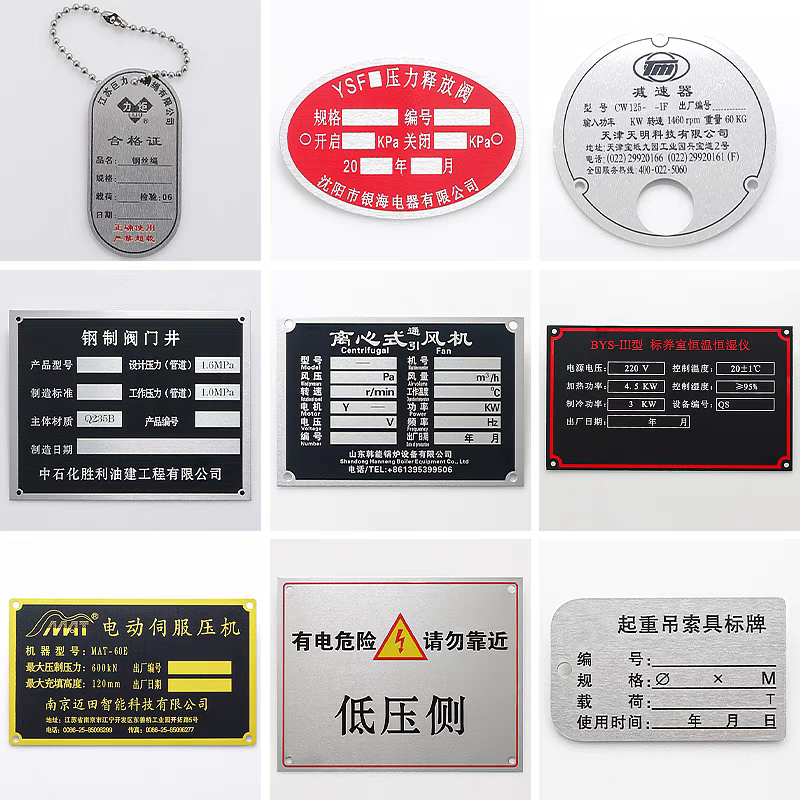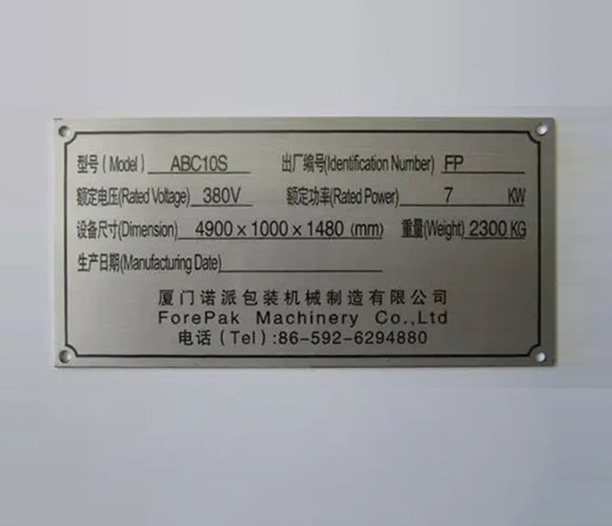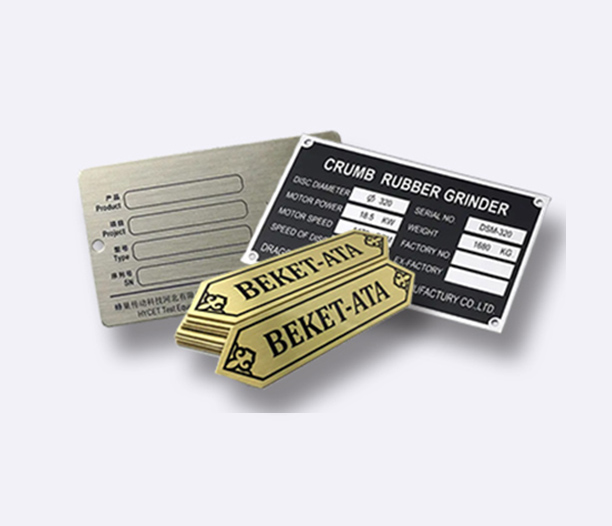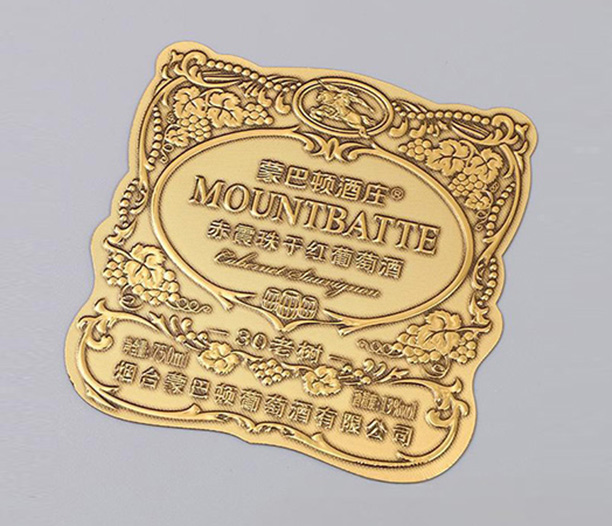Stainless steel metal tags are versatile and durable identification tools used across various sectors, from manufacturing and logistics to healthcare and outdoor applications. These tags, made from high-quality stainless steel alloys, offer exceptional resistance to corrosion, extreme temperatures, and physical wear, making them ideal for long-term asset tracking, safety labeling, and branding. In this article, we delve into the key aspects of stainless steel metal tags, highlighting their importance and practical benefits. Whether you're in industrial management, retail, or any field requiring reliable labeling, understanding these tags can enhance efficiency and durability in your operations. By exploring their composition, advantages, applications, and more, you'll see why stainless steel metal tags are a go-to solution for many professionals.

What Are Stainless Steel Metal Tags?
Stainless steel metal tags are durable, flat pieces typically made from alloys like 304 or 316 stainless steel, which include elements such as chromium and nickel for enhanced corrosion resistance. These tags come in various shapes, sizes, and thicknesses, often featuring engraved, stamped, or printed information like serial numbers, barcodes, logos, or safety warnings. They are designed to withstand harsh environments, including exposure to moisture, chemicals, and UV radiation, without degrading. The manufacturing process involves cutting, finishing, and sometimes coating the steel to ensure longevity. Stainless steel metal tags serve as permanent markers for equipment, inventory, and safety protocols, providing a reliable means of identification that outlasts plastic or paper alternatives. Their versatility allows for customization in terms of text, graphics, and attachment methods, such as holes for rivets or adhesives, making them suitable for both indoor and outdoor use. In essence, stainless steel metal tags are essential tools for maintaining organization, compliance, and traceability in demanding settings.
Key Advantages of Stainless Steel Metal Tags
The primary benefits of stainless steel metal tags stem from their material properties, which include high strength, resistance to rust and corrosion, and longevity. Unlike other materials, stainless steel does not easily warp, crack, or fade, ensuring that information remains legible over time. This durability makes stainless steel metal tags cost-effective in the long run, as they reduce the need for frequent replacements. Additionally, they are non-magnetic in certain grades, which is crucial for applications in electronics or medical devices where interference must be avoided. Another advantage is their aesthetic appeal; stainless steel metal tags can be polished to a shiny finish or given a matte look, enhancing brand visibility and professionalism. They are also environmentally friendly, as stainless steel is recyclable and does not leach harmful substances. In terms of safety, these tags can withstand high temperatures and fire, making them suitable for industrial furnaces or automotive parts. Overall, the robustness and adaptability of stainless steel metal tags make them a superior choice for critical labeling needs, ensuring reliability in even the toughest conditions.
Common Applications and Uses
Stainless steel metal tags find applications in a wide range of industries due to their resilience and versatility. In manufacturing and industrial settings, they are used for asset identification, such as tagging machinery, tools, and pipelines to track maintenance schedules and prevent mix-ups. The logistics sector relies on stainless steel metal tags for shipping labels and inventory management, where they endure handling and outdoor exposure without deterioration. In construction, these tags serve as permanent markers for structural components, providing essential data on load capacities or installation dates. Healthcare facilities use stainless steel metal tags for medical equipment labeling, ensuring sterility and compliance with regulations. Moreover, they are popular in outdoor and marine environments for signage, as they resist saltwater corrosion and weathering. Retail businesses employ stainless steel metal tags for price displays and branding, leveraging their sleek appearance. Even in agriculture, these tags help in livestock tracking and equipment labeling. The adaptability of stainless steel metal tags across these domains underscores their importance in enhancing operational efficiency, safety, and traceability.
Types and Customization Options
Stainless steel metal tags come in various types to suit different needs, including embossed, etched, or laser-engraved versions. Embossed tags feature raised text or designs for easy readability, while etched ones have incised markings that are filled with paint for contrast. Laser-engraved stainless steel metal tags offer precision and permanence, ideal for detailed graphics or barcodes. Customization options abound, allowing users to choose sizes, shapes (like rectangles, circles, or ovals), and thicknesses based on their specific requirements. Attachment methods vary, with options for holes, slots, or adhesive backing to secure the tags to surfaces. Finishes can range from brushed and polished to colored coatings for improved visibility or branding. Additionally, stainless steel metal tags can be made from different grades, such as 304 for general use or 316 for highly corrosive environments, ensuring optimal performance. Some tags also include sequential numbering or QR codes for advanced tracking. This flexibility in design and material selection makes stainless steel metal tags a customizable solution for diverse applications, enabling businesses to tailor them to their exact needs.

How to Select the Right Stainless Steel Metal Tags
Choosing the appropriate stainless steel metal tags involves considering factors like environment, purpose, and budget. First, assess the conditions the tags will face—for instance, if they'll be exposed to chemicals or saltwater, opt for higher-grade stainless steel like 316 to prevent corrosion. Next, determine the information to be displayed; for complex data, laser-engraved stainless steel metal tags are best, while embossed tags suit high-visibility needs. Size and thickness matter for durability; thicker tags withstand physical abuse better, but balance this with cost and space constraints. Attachment methods should align with the surface—adhesive tags work for smooth areas, while drilled holes are needed for metal surfaces. Also, consider compliance with industry standards, such as OSHA or ISO requirements, which might dictate specific labeling features. Budget-wise, while stainless steel metal tags may have a higher upfront cost than alternatives, their longevity offers savings over time. Finally, consult with suppliers for samples and lead times to ensure the tags meet your expectations. By evaluating these aspects, you can select stainless steel metal tags that enhance efficiency and reliability in your operations.
Maintenance and Care for Longevity
Proper maintenance of stainless steel metal tags ensures they remain effective and legible for years. Although stainless steel is low-maintenance, regular cleaning with mild soap and water can remove dirt and grime, preventing buildup that might obscure information. Avoid abrasive cleaners or tools that could scratch the surface, as this might compromise the tag's integrity. For tags in harsh environments, periodic inspections for signs of wear or corrosion are advisable, though high-quality stainless steel metal tags rarely need replacement. If paint-filled engravings fade, touch-ups with specialized paints can restore visibility. Storage should be in dry conditions to prevent unnecessary exposure to moisture before use. In industrial settings, integrating these tags into routine equipment checks can help identify issues early. By following these simple care steps, stainless steel metal tags can maintain their functionality and appearance, providing reliable performance throughout their lifespan. This proactive approach maximizes the return on investment and supports ongoing safety and organization efforts.
Comparing Stainless Steel Metal Tags to Other Materials
When compared to alternative materials like aluminum, plastic, or brass, stainless steel metal tags offer distinct advantages in durability and resistance. Aluminum tags are lighter and cheaper but less resistant to corrosion and physical damage, making them unsuitable for harsh conditions. Plastic tags may be cost-effective but can degrade under UV light or chemicals, whereas stainless steel metal tags withstand these elements effortlessly. Brass tags provide an aesthetic appeal but are prone to tarnishing and are generally softer, leading to quicker wear. In terms of cost-effectiveness, stainless steel metal tags might have a higher initial price, but their longevity reduces long-term expenses. Environmental factors also play a role; stainless steel is fully recyclable and non-toxic, aligning with sustainability goals. Overall, for applications requiring robustness and reliability, stainless steel metal tags outperform many alternatives, ensuring that critical information remains intact and accessible over time.
Frequently Asked Questions About Stainless Steel Metal Tags
Q1: What are the typical sizes available for stainless steel metal tags?
A1: Stainless steel metal tags come in a range of sizes, from small tags as tiny as 0.5 inches for precision labeling to larger ones over 12 inches for signage. Common sizes include 1x2 inches, 2x3 inches, and 4x6 inches, but custom dimensions can be ordered to fit specific needs, ensuring versatility across different applications.
Q2: Can stainless steel metal tags be used in high-temperature environments?
A2: Yes, stainless steel metal tags are excellent for high-temperature settings due to their heat resistance. Grades like 304 and 316 can withstand temperatures up to 1500°F (816°C) intermittently, making them suitable for industrial furnaces, engines, and other hot surfaces without melting or degrading.
Q3: How do I attach stainless steel metal tags to surfaces?
A3: Attachment methods for stainless steel metal tags include drilling holes for screws or rivets, using adhesive backing for smooth surfaces, or employing wire ties for flexible mounting. The choice depends on the surface material and environmental conditions, with options designed to ensure a secure and permanent fit.
Q4: Are stainless steel metal tags recyclable and eco-friendly?
A4: Absolutely, stainless steel metal tags are highly recyclable and environmentally friendly. Stainless steel is made from abundant materials and can be melted down and reused indefinitely without losing quality, reducing waste and supporting sustainable practices in various industries.
Q5: What is the average lifespan of stainless steel metal tags?
A5: The lifespan of stainless steel metal tags typically exceeds 10-20 years, even in harsh conditions, due to their corrosion resistance and durability. With proper maintenance, they can last indefinitely, providing a long-term solution for identification and tracking needs.






